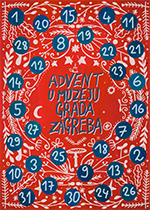The first modern and functional theatre was built in 1834 in the central square of the Upper Town by the trader Kristofor Stanković. Providing a home for the Croatian Thalia, this building became the centre of national theatrical and social life in the period of the Croatian National Revival. When the curtain was raised, here at least there was the sound of living Croatian speech and song. This of course refers to the performance of the first drama in Croatian "Juran i Sofija" (1840) by Ivan Kukuljević Sakcinski, and the first Croatian opera Ljubav i zloba “Love and Malice” by Vatroslav Lisinski.
As well as this, in later nineteenth century Zagreb there were several places for theatrical performances opened, for example, the summer, or outdoor, stage with boxes in the courtyard of the Paradeisl inn (1843) at Jurjevska 3, and the Arena summer theatre in the garden of the Shooting Range in Tuškanac.
With the fall of absolutism in 1860 most performances began to be given in Croatian.
A permanent Croatian opera was set up in 1870 under the leadership of the composer Ivan pl. Zajc, who followed and nourished a typically Central European repertoire.
The dramatic repertoire kept up to date with modern European literature, but was also involved with Croatian literature.
In accord with this repertoire, the Zagreb theatre worked hand in hand with Central European artists. Many world famous interpreters appeared in it including Sarah Bernhardt, Franz Lehar, Richard Strauss.
Via guest performances by its artists abroad, the European and American publics got to know the Zagreb theatre. The famed soprano Milka Trnina, one of the most renowned Wagnerians of her age, appeared from Munich to New York, giving classic performances.
In the 1870s there was a need for a new and bigger theatre building. Thus in 1881 a Law concerning the building of a new national theatre in Zagreb was passed. Plans were ordered from the best known European firm of architects Fellner and Helmer. It was some time before these plans came to fruition; locations and plans were changed. The new head of the Religion and Teaching Section (equivalent to the ministry of culture), Dr Izidor Kršnjavi, put the problem of the new theatre building on the urgent list, and at last the National Croatian Theatre in Zagreb was ceremonially opened on October 14, 1895 in the presence of the Emperor Francis Joseph I.
Nada Premerl

